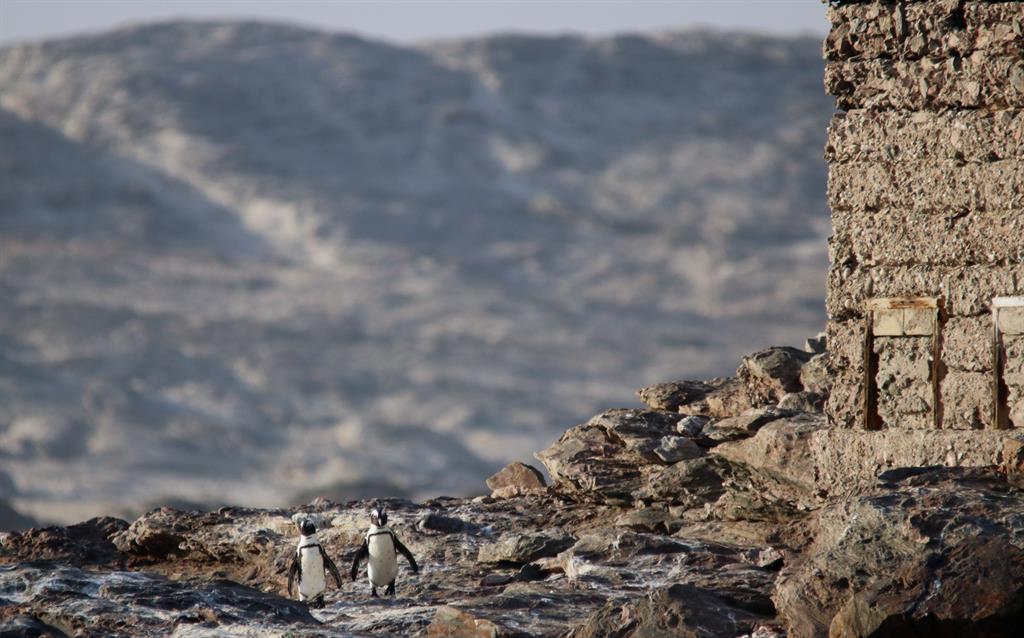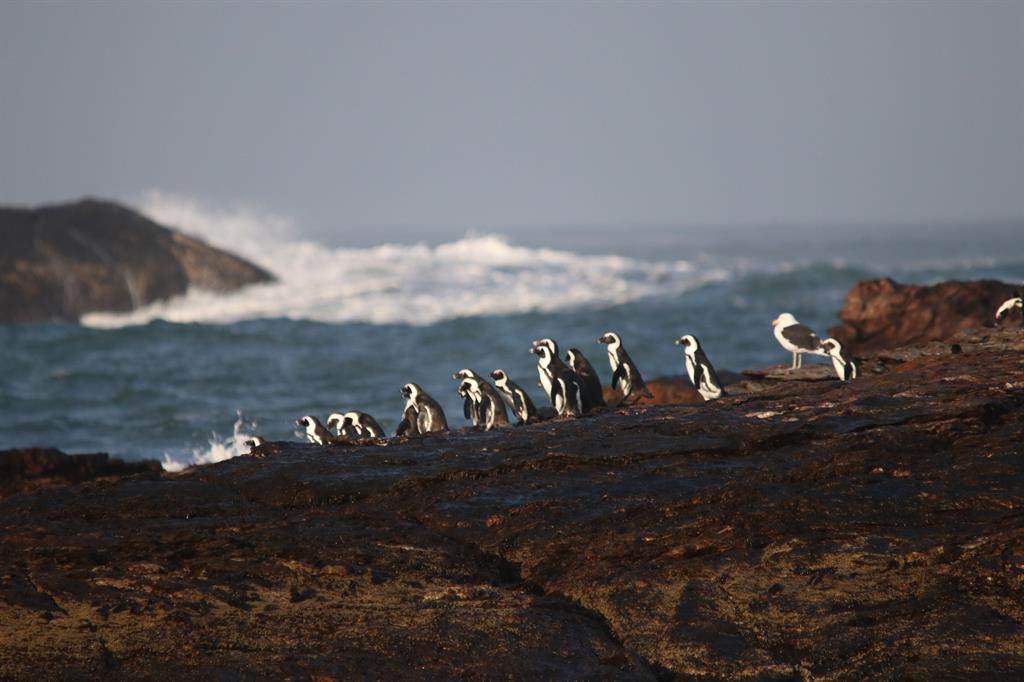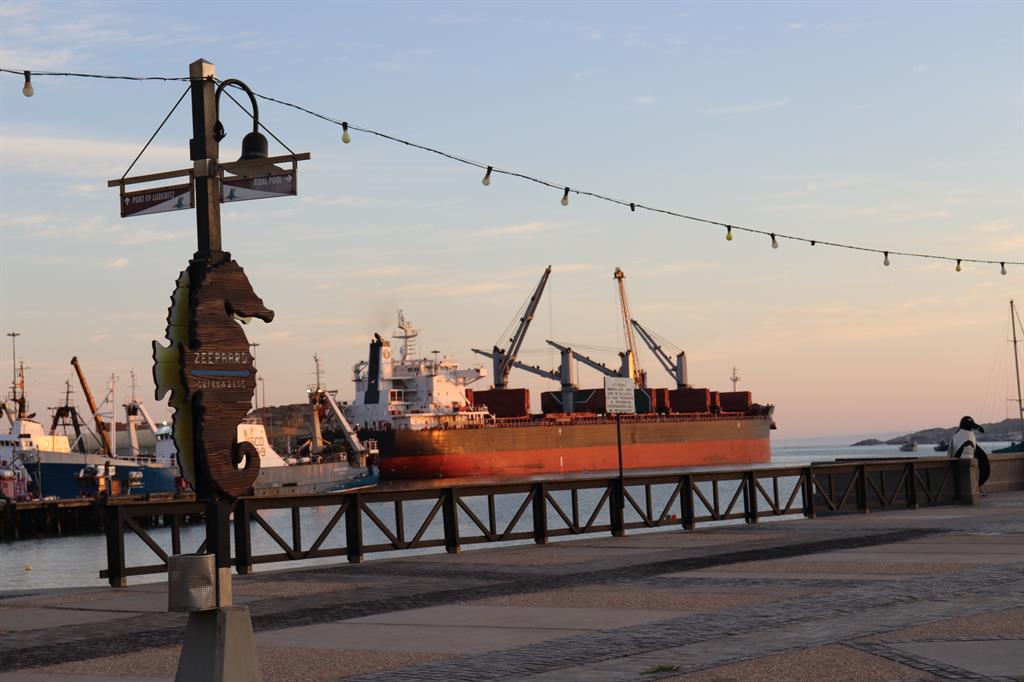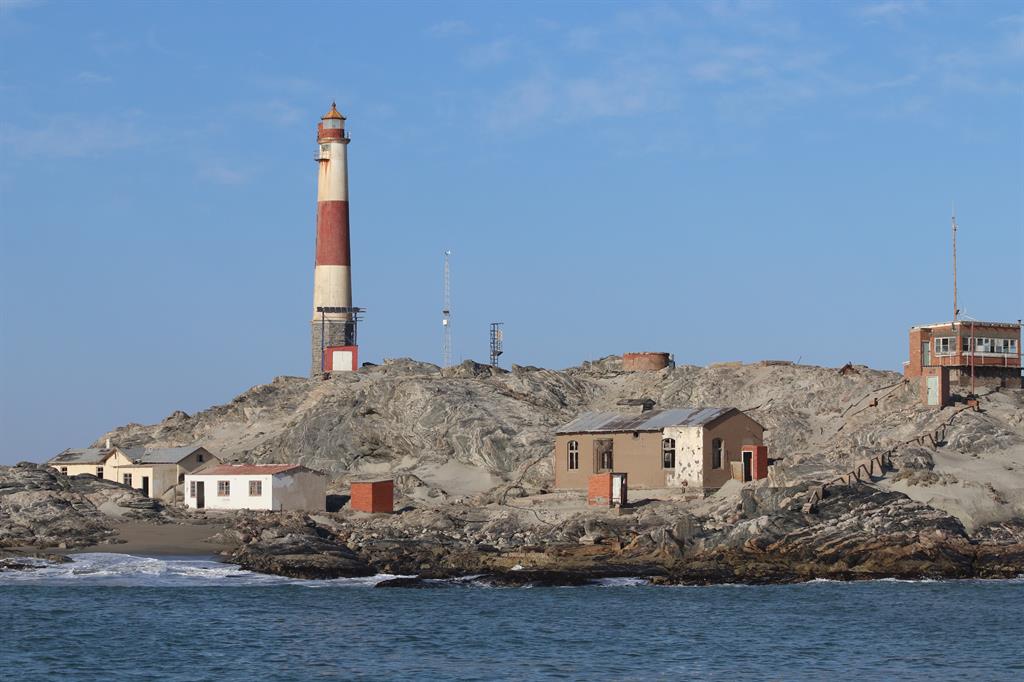Sail to Halifax Island with the Zeepaard
This island is located 240 meters from the mainland and can therefore be observed both from land and the sea. Actual entry of the island is not allowed, as Halifax forms part of the “Meob-Chamais Marine Reserve”. A small colony of African penguins has settled here - a penguin species that is in danger of becoming extinct. This island does serve as a research station for scientists studying sea birds.
At eight o'clock in the morning we leave the Lüderitz Waterfront on board the catamaran Zeepaard, setting sail on a perfectly sunny day. Heiko Metzger is the skipper, who steers the double hull past Shark Island and Dias Point. Along the course, he points out sites and tells us of various events that took place at different sites along of this coast, such as the landing of the Portuguese navigator Bartholomeus Dias, the guano mining sites or the whaling stations. Time and again he draws our attention to the multitude of sea birds and -life, such as the Cape Fur Seals.
African Penguins playfully swim along the beams of the Zeepaard as they dip into the seawater and it seems as though they are competing, trying to see who is the faster. Soon we reach Halifax Island, where we drop our anchor. As from the middle of the 19th century, nitrogen-saturated guano was collected on this island. With deep-reaching layers between six and eight meters thick, this island, which today consists of bare rock, must have then resembled a thick wad of cheese. On Ichaboe Island, which is part of a small, rocky archipelago roughly 25 nautical miles north of Halifax, the layers of guano were said to have been up to 17 meters high, way back then. The harvested guano was used both as a fertilizer in agriculture and for the manufacture of explosives.
As a result of the mining of this so-called “white gold“ (which lasted until 1949), the habitat of thousands of sea birds, such as Cormorants and the African Penguin was destroyed. In 2009 the Meob-Chamais Marine Reserve was proclaimed and it is one of the first marine and island reserves in Namibia. Above all, its objective is that of protecting the unique and fragile fauna and flora, including 14 species of sea birds.
On the way back to the waterfront we meet up with a couple of Heaviside Dolphins (Cephalorhynchus heavisidii), a small species of dolphins that is only found along the Namibian coast and the west coast of South Africa.
Our time spent on the water went past far too quickly and it certainly remains an unforgettable experience.
At eight o'clock in the morning we leave the Lüderitz Waterfront on board the catamaran Zeepaard, setting sail on a perfectly sunny day. Heiko Metzger is the skipper, who steers the double hull past Shark Island and Dias Point. Along the course, he points out sites and tells us of various events that took place at different sites along of this coast, such as the landing of the Portuguese navigator Bartholomeus Dias, the guano mining sites or the whaling stations. Time and again he draws our attention to the multitude of sea birds and -life, such as the Cape Fur Seals.
African Penguins playfully swim along the beams of the Zeepaard as they dip into the seawater and it seems as though they are competing, trying to see who is the faster. Soon we reach Halifax Island, where we drop our anchor. As from the middle of the 19th century, nitrogen-saturated guano was collected on this island. With deep-reaching layers between six and eight meters thick, this island, which today consists of bare rock, must have then resembled a thick wad of cheese. On Ichaboe Island, which is part of a small, rocky archipelago roughly 25 nautical miles north of Halifax, the layers of guano were said to have been up to 17 meters high, way back then. The harvested guano was used both as a fertilizer in agriculture and for the manufacture of explosives.
As a result of the mining of this so-called “white gold“ (which lasted until 1949), the habitat of thousands of sea birds, such as Cormorants and the African Penguin was destroyed. In 2009 the Meob-Chamais Marine Reserve was proclaimed and it is one of the first marine and island reserves in Namibia. Above all, its objective is that of protecting the unique and fragile fauna and flora, including 14 species of sea birds.
On the way back to the waterfront we meet up with a couple of Heaviside Dolphins (Cephalorhynchus heavisidii), a small species of dolphins that is only found along the Namibian coast and the west coast of South Africa.
Our time spent on the water went past far too quickly and it certainly remains an unforgettable experience.










Kommentar
Allgemeine Zeitung
Zu diesem Artikel wurden keine Kommentare hinterlassen